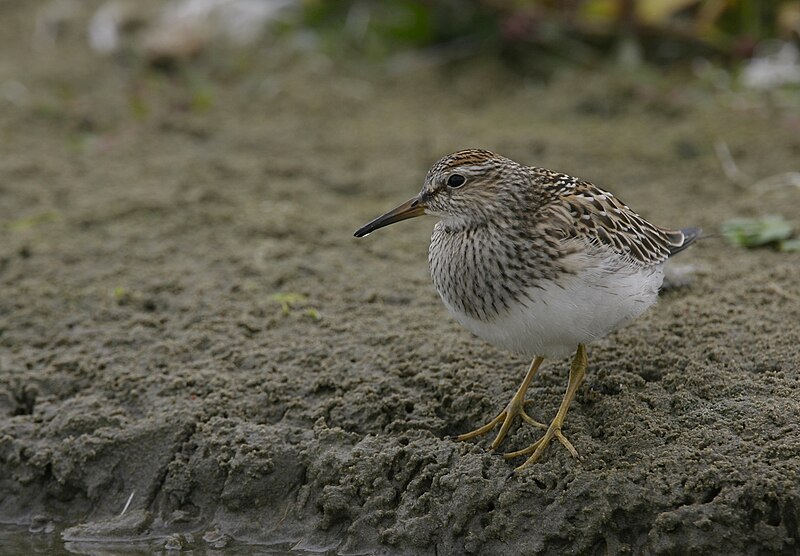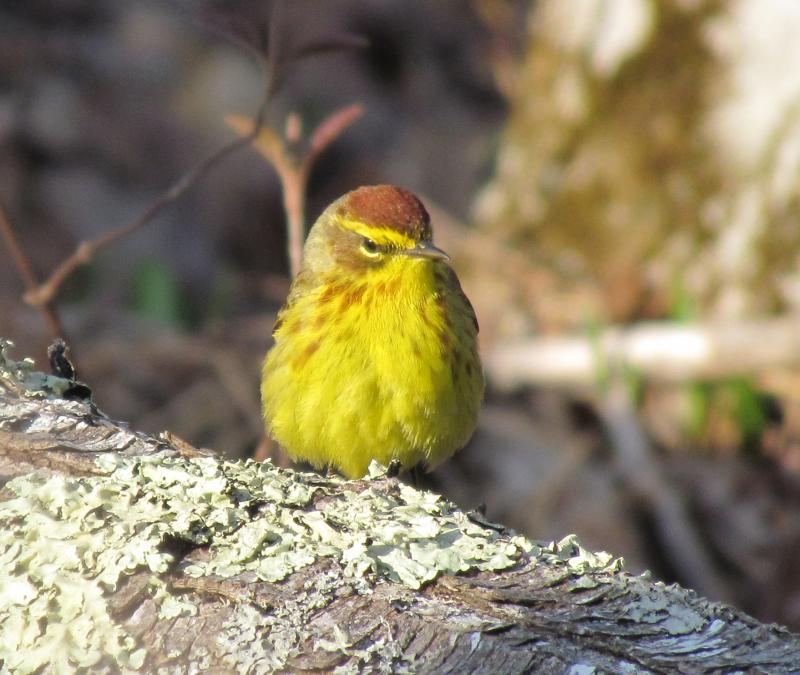The String of Good Birding Luck Continues
It’s hard to believe that we could have repeated our amazing Wharton Point good luck from last month but, somehow, we did. We ran a series of errands in and around Brunswick and, without consulting a tide chart, on a whim, we decided to stop off at Wharton Point on our way to our last errand.
Like we did during our August visit, we arrived just as the tide had turned and was going out, revealing more and more of the extensive mudflats at the base of the parking area and shrub-covered hillside.
And just like in August, there was an incredible abundance of birds taking advantage of the food that the bay obviously provides.
Even more surprising to us was how many of the same species were in attendance during both visits. There were black-bellied plovers, though a smaller flock. Greater yellowlegs, too, but no lesser’s this time—the lesser yellowlegs usually disappear from the Maine coast before the greater yellowlegs (a few of which sometimes persist into the winter).
There was one shorebird surprise: pectoral sandpiper that we hadn’t noticed at first until an immature northern harrier, with its richly cinnamon breast and underwings, floated low over the shore, spooking all of the shorebirds into flight. We could hear the plaintive calls of the plovers but also a low “churk.” The twenty-nine black-bellied plovers (yes, we counted them) amassed into a tight-flying flock and circled around a few times before alighting on the mudflats again. As they landed, we noticed one smaller bird among them, a pectoral sandpiper, the source of that other call. With the aid of our telescope, we could see the distinctive, sharply delineated breast-streaking even at a distance.
Egrets and herons were there again as well. And after our cool experience with the egrets at Weskeag Marsh that we wrote about last week ( https://www.boothbayregister.com/article/snowy-storm-marsh/191196), it was a treat to see so many again, only this time more scattered and distant. There were great egrets and snowy egrets and great blue herons up and down the shores.
The terns were all gone now (could some of them be in South America already?) but the ring-billed gulls still packed in to that spot in the hundreds. They really like it there. We mused on whether many of them were from breeding colonies up in the St. Lawrence River near Montreal.
Two species of late-arrival migrant warblers popped up in the bushes there near the parking lot at Wharton Point. Neither would likely have been there in early August. A palm warbler showed off its yellow undersides as it pumped its tail up and down in the characteristic way that they do. Minutes later we heard a distinctive “chuck” and a yellow-rumped warbler landed in the same tree.
The bird show probably continued but it did so without us. Eventually we did have to continue on with our last errand, we left feeling energized and blessed.
How long will this string of good Wharton Point luck go on?
Jeffrey V. Wells, Ph.D., is a Fellow of the Cornell Lab of Ornithology and Vice President of Boreal Conservation for National Audubon. Dr. Wells is one of the nation's leading bird experts and conservation biologists. He is a coauthor of the seminal “Birds of Maine” book and author of the “Birder’s Conservation Handbook.” His grandfather, the late John Chase, was a columnist for the Boothbay Register for many years. Allison Childs Wells, formerly of the Cornell Lab of Ornithology, is a senior director at the Natural Resources Council of Maine, a nonprofit membership organization working statewide to protect the nature of Maine. Both are widely published natural history writers and are the authors of the popular books, “Maine’s Favorite Birds” (Tilbury House) and “Birds of Aruba, Bonaire, and Curaçao: A Site and Field Guide,” (Cornell University Press).






























